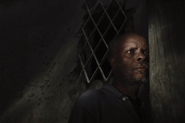 Colossal Youth, 2006. On a derelict building illuminated by the crepuscular glow of a night sky, assorted pieces of furniture and household goods are intermittently discarded from upper level windows, crashing into the razed ruins below. A woman emerges from the shadows, brandishes a small kitchen knife, and recounts her fragmented tale before disappearing, once again, into the cloak of darkness. A deliberative, grey haired man named Ventura hides behind a structural pilaster protruding from a wall – made all the more monolithic and formidable by the low angle shot – as he abstractedly gazes elsewhere, beyond the frame. From this muted, elliptical, and deceptively facile (and seemingly atemporal) opening composition, Pedro Costa establishes the pervasive sense of disposability, social invisibility, longing, and desolation that would define the contextual framework for the film. For the characters in Colossal Youth, the third installment of Costa’s loose triptych of quotidian encounters among a community of Cape Verdean itinerant laborers from the shantytown of Fontaínhas in Portugal, the historical landscape of the Cape Verde islands as barren land, exploited colony, commercial way station, slave port, and leprosaria institution is not a forgotten anecdote, but a suffocating reality that continues to weigh on the collective consciousness of its inhabitants, even in their migration and displacement. Within this immateriality of a haunted, unreconciled burden of past – an imprinted spiritual memory of enslavement, isolation, expendability, impermanence, and social rejection – these transitory, everyday interactions may be seen, not as polite, communal gestures, but rather, as personal testimonies of people living in the ever eroding margins of the visible, struggling to emerge from the liminal before receding into the shadows.
Colossal Youth, 2006. On a derelict building illuminated by the crepuscular glow of a night sky, assorted pieces of furniture and household goods are intermittently discarded from upper level windows, crashing into the razed ruins below. A woman emerges from the shadows, brandishes a small kitchen knife, and recounts her fragmented tale before disappearing, once again, into the cloak of darkness. A deliberative, grey haired man named Ventura hides behind a structural pilaster protruding from a wall – made all the more monolithic and formidable by the low angle shot – as he abstractedly gazes elsewhere, beyond the frame. From this muted, elliptical, and deceptively facile (and seemingly atemporal) opening composition, Pedro Costa establishes the pervasive sense of disposability, social invisibility, longing, and desolation that would define the contextual framework for the film. For the characters in Colossal Youth, the third installment of Costa’s loose triptych of quotidian encounters among a community of Cape Verdean itinerant laborers from the shantytown of Fontaínhas in Portugal, the historical landscape of the Cape Verde islands as barren land, exploited colony, commercial way station, slave port, and leprosaria institution is not a forgotten anecdote, but a suffocating reality that continues to weigh on the collective consciousness of its inhabitants, even in their migration and displacement. Within this immateriality of a haunted, unreconciled burden of past – an imprinted spiritual memory of enslavement, isolation, expendability, impermanence, and social rejection – these transitory, everyday interactions may be seen, not as polite, communal gestures, but rather, as personal testimonies of people living in the ever eroding margins of the visible, struggling to emerge from the liminal before receding into the shadows.
At the nucleus of this rended community from the demolished Fontaínhas slum is Ventura, a laborer forced into retirement by disability who has assumed the role of informal village elder to an assortment of uprooted friends, acquaintances, former colleagues, and extended family (a paternal character that evokes the musician with an inordinately large family (from a series of out of wedlock relationships) in Casa de Lava): a recovering drug addict (and titular character of Costa’s earlier film, In Vanda’s Room) whose awkward maternal instincts reveal her own stunted maturity, a government housing agent bemused by Ventura’s vague and often arbitrary requirements for his new home, a daughter still living in the ruins of Fontaínhas awaiting relocation to public housing, an injured laborer undergoing physical rehabilitation who longs for a less hazardous job in his trained vocation as a goldsmith, a museum guard who scuttles Ventura from a gallery exhibiting Diego Velázquez paintings, his lean and angular physicality momentarily cutting a dark and sinuous figure as majestic and transfixing as the works of art that frame him (note Costa’s homage to Straub/Huillet in their strategy for full representation (or proportion) framing of the paintings in Cézanne and A Trip to the Louvre), an illiterate migrant worker who enlists Ventura to write a letter to send home to his beloved. However, as Ventura’s role transforms from transcriber to author – or more appropriately, ghostwriter – the love letter increasingly takes on the profound weight of his own longing and sense of despair after his lover’s abandonment. Inevitably, the repeated recitation (or perhaps, incantation) of Ventura’s work-in-progress, visceral prose in subtly alternating forms throughout the film becomes a reflection of the overarching structure of temps morts that characterize the encounters of Colossal Youth itself – the transfiguration of the corporeal into the ethereal through mundane ritual – in all its awkward composition, disarming humility, and poetic ineloquence.
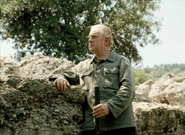 These Encounters of Theirs, 2006. In its exaggerated formalism, idiosyncratic performance, and extended temps morts, Jean-Marie Straub and Danièle Huillet’s film is a rigorous and subversively irreverent, but thoughtful, sensual, and articulate meditation on the search for enlightenment, the rapture of divine inspiration, the intranscendable distance of gods, and the elusive quest for immortality. Composed of five distinctive, self-encapsulated, two-actor conversations adapted from the last five stories of Cesare Pavese’s Dialogues with Leucò, the film presents a series of mythological encounters – siblings (eccentrically facing away from the camera) attempt to come to terms with the ephemeral nature of divine will, a young couple discusses the nature of human fragility that propels its eternal quest for enduring legacy, an older couple (in a sumptuous panning sequence that concludes with a vertical pan of a Garden of Eden-like paradise) wistfully observes the exhilaration of wide-eyed discovery and new sensations, an artist and his muse contemplate the integral friction and trauma intrinsic in the artistic process (an idea that evokes Straub’s impassioned, if abstracted monologue in Pedro Costa’s Where Does Your Hidden Smile Lie?), two men – perhaps warriors – reflect on the simple pleasures of human contact. Concluding with a sublime two-axis, panoramic survey of the landscape that terminates with a stationary shot of an electrical power line that visually bisects the earth from the sky, the film converges into a profound, yet instinctual image of human transcendence through humility, mortality, struggle, experience, and creation.
These Encounters of Theirs, 2006. In its exaggerated formalism, idiosyncratic performance, and extended temps morts, Jean-Marie Straub and Danièle Huillet’s film is a rigorous and subversively irreverent, but thoughtful, sensual, and articulate meditation on the search for enlightenment, the rapture of divine inspiration, the intranscendable distance of gods, and the elusive quest for immortality. Composed of five distinctive, self-encapsulated, two-actor conversations adapted from the last five stories of Cesare Pavese’s Dialogues with Leucò, the film presents a series of mythological encounters – siblings (eccentrically facing away from the camera) attempt to come to terms with the ephemeral nature of divine will, a young couple discusses the nature of human fragility that propels its eternal quest for enduring legacy, an older couple (in a sumptuous panning sequence that concludes with a vertical pan of a Garden of Eden-like paradise) wistfully observes the exhilaration of wide-eyed discovery and new sensations, an artist and his muse contemplate the integral friction and trauma intrinsic in the artistic process (an idea that evokes Straub’s impassioned, if abstracted monologue in Pedro Costa’s Where Does Your Hidden Smile Lie?), two men – perhaps warriors – reflect on the simple pleasures of human contact. Concluding with a sublime two-axis, panoramic survey of the landscape that terminates with a stationary shot of an electrical power line that visually bisects the earth from the sky, the film converges into a profound, yet instinctual image of human transcendence through humility, mortality, struggle, experience, and creation.
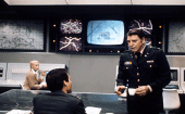 Twilight’s Last Gleaming, 1977. Loosely adapted from novelist Walter Wager’s 1971 thriller, Viper Three, Twilight’s Last Gleaming is Robert Aldrich’s impassioned and provocative excoriation – and, perhaps implicitly, exorcism – of the American government’s administrative Cold War policy that sought to wage a representative, small-scale, protracted ideological war in Vietnam in order to reinforce a “doctrine of credibility” to the (then) Soviet Union and world at large of the country’s resolve and willingness to win war at all cost, even if the rules of engagement are reduced to levels of barbarity, untold casualty, mass murder, and human atrocity. Aldrich frames the country’s deeply troubled moral conscience through an unlikely pair of world-weary idealists: a former military general and conscientious objector turned escaped convict named Larry Dell (Burt Lancaster) who, in his increasingly criticism of the war and volatile temperament, became a convenient target for government discreditation, and the newly elected president, David Stevens (Charles Durning) who, even in holding office in the aftermath of Vietnam, cannot escape its haunted, unreconciled legacy in his appointment of seasoned cabinet advisors who had weathered the political fallout (and dodged accountability) for the interminable war (Aldrich astutely assembles a cast of veteran actors including Joseph Cotton, Richard Widmark, and Melvyn Douglas to reflect the advisors’ status as fossilized relics out of touch with the consequences and social reality of their ideological war game). Recently escaped from a correctional facility where he is serving time on a trumped up murder conviction, Dell enlists the aid of fellow convicts, musclemen Willis (Paul Winfield) and Augie (Burt Young), and trigger-happy safecracker, Hoxey (William Smith) in an elaborate plot to break into the nuclear silo of a military base, commandeer its ICBM missiles, and hold the government – and the world – hostage in exchange for a large sum of money, a safe passage on Air Force One, and above all, the full disclosure of a top secret transcript detailing the former administration’s attempts to continue the Vietnam engagement despite already known inevitable consequences and the impossibility of victory as a means of deterrent by proving the country’s willingness to use nuclear weapons in the event of an all out war under a policy of mutual assured destruction. In its bracingly contemporary and profoundly relevant exposition on the moral consequences of entrenched ideology and disconnected (and delusive) righteousness, the film articulates a sincere and elegiac plea for transparency in government and empowerment of the people – a sobering vigil for the restoration of the dignity of political service and the dying ideals of a once great civilization that, in the myopic intoxication of power, has lost its way.
Twilight’s Last Gleaming, 1977. Loosely adapted from novelist Walter Wager’s 1971 thriller, Viper Three, Twilight’s Last Gleaming is Robert Aldrich’s impassioned and provocative excoriation – and, perhaps implicitly, exorcism – of the American government’s administrative Cold War policy that sought to wage a representative, small-scale, protracted ideological war in Vietnam in order to reinforce a “doctrine of credibility” to the (then) Soviet Union and world at large of the country’s resolve and willingness to win war at all cost, even if the rules of engagement are reduced to levels of barbarity, untold casualty, mass murder, and human atrocity. Aldrich frames the country’s deeply troubled moral conscience through an unlikely pair of world-weary idealists: a former military general and conscientious objector turned escaped convict named Larry Dell (Burt Lancaster) who, in his increasingly criticism of the war and volatile temperament, became a convenient target for government discreditation, and the newly elected president, David Stevens (Charles Durning) who, even in holding office in the aftermath of Vietnam, cannot escape its haunted, unreconciled legacy in his appointment of seasoned cabinet advisors who had weathered the political fallout (and dodged accountability) for the interminable war (Aldrich astutely assembles a cast of veteran actors including Joseph Cotton, Richard Widmark, and Melvyn Douglas to reflect the advisors’ status as fossilized relics out of touch with the consequences and social reality of their ideological war game). Recently escaped from a correctional facility where he is serving time on a trumped up murder conviction, Dell enlists the aid of fellow convicts, musclemen Willis (Paul Winfield) and Augie (Burt Young), and trigger-happy safecracker, Hoxey (William Smith) in an elaborate plot to break into the nuclear silo of a military base, commandeer its ICBM missiles, and hold the government – and the world – hostage in exchange for a large sum of money, a safe passage on Air Force One, and above all, the full disclosure of a top secret transcript detailing the former administration’s attempts to continue the Vietnam engagement despite already known inevitable consequences and the impossibility of victory as a means of deterrent by proving the country’s willingness to use nuclear weapons in the event of an all out war under a policy of mutual assured destruction. In its bracingly contemporary and profoundly relevant exposition on the moral consequences of entrenched ideology and disconnected (and delusive) righteousness, the film articulates a sincere and elegiac plea for transparency in government and empowerment of the people – a sobering vigil for the restoration of the dignity of political service and the dying ideals of a once great civilization that, in the myopic intoxication of power, has lost its way.
 Summer 04, 2006. Stefan Krohmer’s deceptively lyrical Summer 04 chronicles the unexpected, life altering summer vacation of domestic partners Mirjam (Martina Gedeck) and André (Peter Davor), and their teenage son Nils (Lucas Kotaranin) as they attempt to navigate through the murky, uncharted waters of romantic – and emotional – entanglements caused by the introduction of Nils’ precocious, 12 year old girlfriend, Livia (Svea Lohde) into their comfortable and predictably routine lives. In retrospect, the idyllic images of weather worn summer cottages, bicycle rides through the country, sun drenched days, outdoor dining, and afternoon sailing excursions would prove to be a deceptive foil to film’s the dark, slow brewing tale of dangerous attraction and forbidden desire, as Livia’s unorthodox – and uncomfortably libertine – attitude creates an complicated emotional dynamic when, one day, Nils turns over the helm of his father’s catamaran (along with his unresisting girlfriend) to an attractive, young American expatriate named Bill (Robert Seeliger) and invites him into their home. Unsettled by Bill’s implicit over familiar response to Livia’s obliging attention and bound by a sense of responsibility over Livia’s entrusted care in her parents’ absence, Mirjam seeks to drive a wedge in the budding relationship between the two, an insinuation into their lives that unwittingly exposes the fragile emptiness of her own unfulfilling relationship with the all too complacent and easy going André. Evoking the moral tales of Eric Rohmer in its understated, yet perceptive conversational approach to the inconstant rationalizations and (over) intellectualizations that seek to reconcile (or at least self-justify) the mysteries of the human heart, the film is an acutely observed exposition on the amorphous terrain of human attraction, fidelity, guilt, and longing.
Summer 04, 2006. Stefan Krohmer’s deceptively lyrical Summer 04 chronicles the unexpected, life altering summer vacation of domestic partners Mirjam (Martina Gedeck) and André (Peter Davor), and their teenage son Nils (Lucas Kotaranin) as they attempt to navigate through the murky, uncharted waters of romantic – and emotional – entanglements caused by the introduction of Nils’ precocious, 12 year old girlfriend, Livia (Svea Lohde) into their comfortable and predictably routine lives. In retrospect, the idyllic images of weather worn summer cottages, bicycle rides through the country, sun drenched days, outdoor dining, and afternoon sailing excursions would prove to be a deceptive foil to film’s the dark, slow brewing tale of dangerous attraction and forbidden desire, as Livia’s unorthodox – and uncomfortably libertine – attitude creates an complicated emotional dynamic when, one day, Nils turns over the helm of his father’s catamaran (along with his unresisting girlfriend) to an attractive, young American expatriate named Bill (Robert Seeliger) and invites him into their home. Unsettled by Bill’s implicit over familiar response to Livia’s obliging attention and bound by a sense of responsibility over Livia’s entrusted care in her parents’ absence, Mirjam seeks to drive a wedge in the budding relationship between the two, an insinuation into their lives that unwittingly exposes the fragile emptiness of her own unfulfilling relationship with the all too complacent and easy going André. Evoking the moral tales of Eric Rohmer in its understated, yet perceptive conversational approach to the inconstant rationalizations and (over) intellectualizations that seek to reconcile (or at least self-justify) the mysteries of the human heart, the film is an acutely observed exposition on the amorphous terrain of human attraction, fidelity, guilt, and longing.
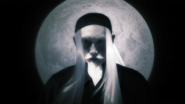 Tachigui: The Amazing Lives of the Fast Food Grifters, 2006. Alternately baffling in its unclassifiable lunacy, infectious in its inspired creativity, irresistible in its tongue-in-cheek audacity, and admirable in its visionary integrity, Mamoru Oshii’s deliriously off-kilter, rapid fire superlivemation animation feature, Tachigui: The Amazing Lives of the Fast Food Grifters presents an epic, cultural and socio-political survey of twentieth century history (and into the early years of the new century) as idiosyncratically told from the underground mythology of fast food grifters: a group of reputed con artists who – through a collective arsenal of intelligence, charisma, ingenuity, brute strength (or rather, appetite), and even sheer incomprehensibility – have managed to make a successful practice out of talking their way out of paying for tachigui fast food meals from assorted shops throughout Japan, and consequently elevated the art of fast food grifting. The first profile is of Moongaze Ginji, a priest-like elder who emerges from the shadows of the thriving black markets shortly after the end of the Pacific War (and the beginning of American occupation) and who, in his evocation of classical landscape in a bowl of noodles, attempts to kindle the nostalgic sentiment of Japan’s rich, cultural past. In the 1950s, as the recovering country was experiencing a “post war economic miracle”, a new hero(ine) emerges among the grifter mythology in Foxy Croquette O-Gin, an attractive, liberated, modern women who uses her sensuality and cunning intelligence to equally charm and outwit her gullible (and decidedly male) victims. As Japan sought a symbolic international re-emergence by hosting the 1964 Tokyo Olympics, Crying Inumaru employs a radically different tactic by playing the role of perennial loser – an incisive strategy that, juxtaposed against the seemingly tangential anecdote of Mothra’s release, provides an incisive broader comment on the collective amnesia and propensity towards revisionism inherent in the nation’s reinvention and self-portrayal as victims in the terrible aftermath of the Pacific War. Within this context of social and historical intersection, the sensationalized death of grifter Cold Badger Masa in the late 1960s may also be seen, not as an act of random violence, but as a reflective symptom of the country’s (if not, the world’s) increasing radicalization and social upheaval that was ushered by the rise of the Red Army movement. Culminating with a series of characters that reflect the country’s transforming (and decidedly, un-Japanese) culinary palate – Beefbowl Ushigoro, Hamburger Tetsu, Frankfurter Tatsu, Medium Hot Sabu – the film serves as a provocative and trenchant satire on the country’s inexorable path towards recovery, modernization, consumerism, global assimilation, and cultural dilution.
Tachigui: The Amazing Lives of the Fast Food Grifters, 2006. Alternately baffling in its unclassifiable lunacy, infectious in its inspired creativity, irresistible in its tongue-in-cheek audacity, and admirable in its visionary integrity, Mamoru Oshii’s deliriously off-kilter, rapid fire superlivemation animation feature, Tachigui: The Amazing Lives of the Fast Food Grifters presents an epic, cultural and socio-political survey of twentieth century history (and into the early years of the new century) as idiosyncratically told from the underground mythology of fast food grifters: a group of reputed con artists who – through a collective arsenal of intelligence, charisma, ingenuity, brute strength (or rather, appetite), and even sheer incomprehensibility – have managed to make a successful practice out of talking their way out of paying for tachigui fast food meals from assorted shops throughout Japan, and consequently elevated the art of fast food grifting. The first profile is of Moongaze Ginji, a priest-like elder who emerges from the shadows of the thriving black markets shortly after the end of the Pacific War (and the beginning of American occupation) and who, in his evocation of classical landscape in a bowl of noodles, attempts to kindle the nostalgic sentiment of Japan’s rich, cultural past. In the 1950s, as the recovering country was experiencing a “post war economic miracle”, a new hero(ine) emerges among the grifter mythology in Foxy Croquette O-Gin, an attractive, liberated, modern women who uses her sensuality and cunning intelligence to equally charm and outwit her gullible (and decidedly male) victims. As Japan sought a symbolic international re-emergence by hosting the 1964 Tokyo Olympics, Crying Inumaru employs a radically different tactic by playing the role of perennial loser – an incisive strategy that, juxtaposed against the seemingly tangential anecdote of Mothra’s release, provides an incisive broader comment on the collective amnesia and propensity towards revisionism inherent in the nation’s reinvention and self-portrayal as victims in the terrible aftermath of the Pacific War. Within this context of social and historical intersection, the sensationalized death of grifter Cold Badger Masa in the late 1960s may also be seen, not as an act of random violence, but as a reflective symptom of the country’s (if not, the world’s) increasing radicalization and social upheaval that was ushered by the rise of the Red Army movement. Culminating with a series of characters that reflect the country’s transforming (and decidedly, un-Japanese) culinary palate – Beefbowl Ushigoro, Hamburger Tetsu, Frankfurter Tatsu, Medium Hot Sabu – the film serves as a provocative and trenchant satire on the country’s inexorable path towards recovery, modernization, consumerism, global assimilation, and cultural dilution.
 Longing, 2006. At the heart of Valeska Grisebach’s slender, yet meticulously observed slice of life portrait, Longing, is the seemingly ideal marriage of metalworker and volunteer firefighter, Markus (Andreas Müller) and his wife, Ella (Ilka Welz), a chorus singer who, in the film’s establishing sequences, casually describes their romantic union as the result, not of love at first sight, but of a friendship that evolved into a latent, but profound intimacy. Separated from each other when Markus travels with his colleagues to a firefighter’s convention, the time apart proves especially unbearable for Ella who, in his absence, begins to realize the depth of her affection for her absent husband. Similarly, their separation proves equally difficult for Markus, who, in the haze of intoxication and youthful nostalgia, succumbs to the shy attention of a charming and attractive waitress named Rose (Anett Dornbusch). However, as Markus returns home to Ella and to the familiar routine of his bucolic and uneventful life, the emotional repercussions of his brief affair with Rose proves to be an inescapable reality that he must confront to preserve the integrity of their mutual intimacy. Recalling Barbara Albert’s cinema in its episodic, extrapolative, organic narrative and the integral incorporation of zeitgeist pop songs as a generational soundtrack and tongue in cheek, short hand mode of contemporary expression that articulate the contours of interior, emotional landscapes, and infused with Michael Haneke’s familiar penchant for illustrating subtle perturbations within quotidian ritual that lead to unforeseen and irreparably transformative consequences, the film is a distilled, yet thoughtful and sensitively rendered tale of intimacy, betrayal, and elusive nature of desire.
Longing, 2006. At the heart of Valeska Grisebach’s slender, yet meticulously observed slice of life portrait, Longing, is the seemingly ideal marriage of metalworker and volunteer firefighter, Markus (Andreas Müller) and his wife, Ella (Ilka Welz), a chorus singer who, in the film’s establishing sequences, casually describes their romantic union as the result, not of love at first sight, but of a friendship that evolved into a latent, but profound intimacy. Separated from each other when Markus travels with his colleagues to a firefighter’s convention, the time apart proves especially unbearable for Ella who, in his absence, begins to realize the depth of her affection for her absent husband. Similarly, their separation proves equally difficult for Markus, who, in the haze of intoxication and youthful nostalgia, succumbs to the shy attention of a charming and attractive waitress named Rose (Anett Dornbusch). However, as Markus returns home to Ella and to the familiar routine of his bucolic and uneventful life, the emotional repercussions of his brief affair with Rose proves to be an inescapable reality that he must confront to preserve the integrity of their mutual intimacy. Recalling Barbara Albert’s cinema in its episodic, extrapolative, organic narrative and the integral incorporation of zeitgeist pop songs as a generational soundtrack and tongue in cheek, short hand mode of contemporary expression that articulate the contours of interior, emotional landscapes, and infused with Michael Haneke’s familiar penchant for illustrating subtle perturbations within quotidian ritual that lead to unforeseen and irreparably transformative consequences, the film is a distilled, yet thoughtful and sensitively rendered tale of intimacy, betrayal, and elusive nature of desire.
 10 Skies, 2004. While James Benning’s 13 Lakes captures the materiality, self-equilibration, and memory of water, the film’s equally rigorous and abstractly hypnotic companion piece, Ten Skies illustrates the mutability, ephermerality, and transience of nature. Shot in Val Verde, California, the film consists of ten minute, stationary shots of ten isolated skyscapes set against the ambient sounds of the unseen (but implied) diverse landscape, as each cloud formation dissipates, morphs, displaces, or is otherwise transformed by its environment: the shifting symmetry of parallel line trails created by the residual plumes from jet engines that have long traversed the airspace, the tincture of orange that suffuses the lower frame from a setting sun, the obscuration and otherworldly discoloration from a distant, raging fire, the rapid movement of billowy clouds to the top of the frame, accelerated by the propulsive, rapid expansion of liberated exhaust fumes from an industrial factory operation, the tranquility of a near static sky momentary interrupted by the intrusion of real and artificial birds in flight (an earlier image of a traversing airplane is visually repeated a shot of a small flock of birds darting across the frame). In illustrating the decontextualization of cloud formations from a fixed point of reference in their insubstantiality and amorphous autonomy, Ten Skies reflects their seeming existence outside of time, creating a contemplative, peaceful, and indelible illustration of environmental fragility and transitory – yet paradoxically eternal – quotidian sublimity.
10 Skies, 2004. While James Benning’s 13 Lakes captures the materiality, self-equilibration, and memory of water, the film’s equally rigorous and abstractly hypnotic companion piece, Ten Skies illustrates the mutability, ephermerality, and transience of nature. Shot in Val Verde, California, the film consists of ten minute, stationary shots of ten isolated skyscapes set against the ambient sounds of the unseen (but implied) diverse landscape, as each cloud formation dissipates, morphs, displaces, or is otherwise transformed by its environment: the shifting symmetry of parallel line trails created by the residual plumes from jet engines that have long traversed the airspace, the tincture of orange that suffuses the lower frame from a setting sun, the obscuration and otherworldly discoloration from a distant, raging fire, the rapid movement of billowy clouds to the top of the frame, accelerated by the propulsive, rapid expansion of liberated exhaust fumes from an industrial factory operation, the tranquility of a near static sky momentary interrupted by the intrusion of real and artificial birds in flight (an earlier image of a traversing airplane is visually repeated a shot of a small flock of birds darting across the frame). In illustrating the decontextualization of cloud formations from a fixed point of reference in their insubstantiality and amorphous autonomy, Ten Skies reflects their seeming existence outside of time, creating a contemplative, peaceful, and indelible illustration of environmental fragility and transitory – yet paradoxically eternal – quotidian sublimity.
 13 Lakes, 2004. Composed of a series of episodic, stationary long takes, each recording an uninterrupted, ten minute shot length and punctuated by an extended, interstitial black screen, James Benning’s structuralist film, 13 Lakes is a rigorous and demanding, yet hypnotic and transfixing meditation on diurnal rhythms, climatic changes, and the implications of (irreversible) man-made transformation. The opening image, shot in Jackson Lake, seemingly establishes the composition of the images: the deep, russet colors of a land mass bisects the frame, the skies emerge from the contours of the irregular landscape in the upper frame, occupying the golden mean, the tranquil waters ripple across the lower frame, finely perturbating the reflection of the landscape to create impressionistic, angular, virtual depressions in the water. The subsequent shot of Moosehead Lake overturns the placidity of the preceding installment in its grey tones and overcast skies – the reflection of the land mass now nearly imperceptible in the aqueous stipling of raindrops. A third installment at the Salton Sea then redefines the now familiar spatial (and implicitly hierarchical) tripartite bounds of earth framed by water and sky, as the water body is, itself, bisected into a region of foam and still waters: this curious separation produced by the violent churning of speedboat motors that intermittently, but palpably, dart across the frame – the layer of froth, unable to recover completely before the turbulence of a subsequent speedboat, migrating forward towards a stratified layer of foamy suspension. The introduction of (residual) human imprint also serves to subconsciously shift the perspective of the viewer from a terrestrial – and more importantly, implicitly human-centric focus (the demarcation of the land from water as a point of identification to the position of our own natural habitat) – to the image of humans as intruders and disrupters of an overarching natural order. This inferential breakdown in symbiotic relationship between land and water caused by the human interference is perhaps best exemplified in the wintertime image of Lake Superior, as fragments of broken ice floating in the water restlessly shift in relation to each other, creating a figurative plate tectonics – the abstract rhythm of their dynamic, puzzle-like, cause and effect displacement only momentarily disrupted by a passing freight ship. Converging to an internal symmetry of indigenous ecology (the saline, almost alien whiteness of the Salton Sea, the frozen waters of Lake Superior, the sublime, undistorted landscape reflection of Crater Lake), man-made intrusion (the impressive bascule bridge that spans Lake Pontchartrain in Louisiana, the sound of a long, lumbering freight train in Lake Okeechobee, the sound of intermittent, sequential gunfire in Crater Lake), sublimated landscape (as in the images of Lake Winnebago and Oneida Lake where the land mass is reduced to near slivers of demarcation in the edges of the bisected frame), the film serves an austere, bracing, and indelible image of symbiotic landscape, the encroachment – and imposition – of civilization, and the fragile process of ecological balance.
13 Lakes, 2004. Composed of a series of episodic, stationary long takes, each recording an uninterrupted, ten minute shot length and punctuated by an extended, interstitial black screen, James Benning’s structuralist film, 13 Lakes is a rigorous and demanding, yet hypnotic and transfixing meditation on diurnal rhythms, climatic changes, and the implications of (irreversible) man-made transformation. The opening image, shot in Jackson Lake, seemingly establishes the composition of the images: the deep, russet colors of a land mass bisects the frame, the skies emerge from the contours of the irregular landscape in the upper frame, occupying the golden mean, the tranquil waters ripple across the lower frame, finely perturbating the reflection of the landscape to create impressionistic, angular, virtual depressions in the water. The subsequent shot of Moosehead Lake overturns the placidity of the preceding installment in its grey tones and overcast skies – the reflection of the land mass now nearly imperceptible in the aqueous stipling of raindrops. A third installment at the Salton Sea then redefines the now familiar spatial (and implicitly hierarchical) tripartite bounds of earth framed by water and sky, as the water body is, itself, bisected into a region of foam and still waters: this curious separation produced by the violent churning of speedboat motors that intermittently, but palpably, dart across the frame – the layer of froth, unable to recover completely before the turbulence of a subsequent speedboat, migrating forward towards a stratified layer of foamy suspension. The introduction of (residual) human imprint also serves to subconsciously shift the perspective of the viewer from a terrestrial – and more importantly, implicitly human-centric focus (the demarcation of the land from water as a point of identification to the position of our own natural habitat) – to the image of humans as intruders and disrupters of an overarching natural order. This inferential breakdown in symbiotic relationship between land and water caused by the human interference is perhaps best exemplified in the wintertime image of Lake Superior, as fragments of broken ice floating in the water restlessly shift in relation to each other, creating a figurative plate tectonics – the abstract rhythm of their dynamic, puzzle-like, cause and effect displacement only momentarily disrupted by a passing freight ship. Converging to an internal symmetry of indigenous ecology (the saline, almost alien whiteness of the Salton Sea, the frozen waters of Lake Superior, the sublime, undistorted landscape reflection of Crater Lake), man-made intrusion (the impressive bascule bridge that spans Lake Pontchartrain in Louisiana, the sound of a long, lumbering freight train in Lake Okeechobee, the sound of intermittent, sequential gunfire in Crater Lake), sublimated landscape (as in the images of Lake Winnebago and Oneida Lake where the land mass is reduced to near slivers of demarcation in the edges of the bisected frame), the film serves an austere, bracing, and indelible image of symbiotic landscape, the encroachment – and imposition – of civilization, and the fragile process of ecological balance.
 Retribution, 2006. Kiyoshi Kurosawa’s brooding, atmospheric, surreal, and sufficiently creepy, but woefully underformed and uncharacteristically messy horror film, Retribution unfolds with the formulaic familiarity of a haphazardly (and irregularly) sutured career retrospective digest. A rumpled and overworked detective, Yoshioka (Kôji Yakusho) and his partner Miyaji (Tsuyoshi Ihara) are called in to investigate the apparent murder by drowning of an unidentified woman wearing a red dress near a shallow, saltwater depression at a recently completed land fill. However, what appears to be a routine investigation soon takes on a more ominous tone as Yoshioka becomes increasingly consumed by the unusual circumstances surrounding her death. Instinctually finding a trail of clues that curiously tend to implicate him (evoking traces of Doppelgänger) and following a rash of dead end, yet seemingly coincidentally related saltwater drowning deaths where the individual perpetrators appear all too easily caught (an amnesic, viral compulsion that recalls Cure), Yoshioka continues to be haunted by the unreconciled ghost of the woman in red (Riona Hazuki), an implacable torment that may, perhaps, be rooted in the disruption of the ecological balance caused by the city’s aggressive land fill construction development and waterway redistribution of Tokyo Bay – a hypothesis that seems to be corroborated by the increasing frequency of concussive, earthquake tremors that plague the area (the profound repercussions of an upended natural order that is also alluded to in Pulse). As in Kurosawa’s earlier film Charisma, Retribution channels the spirit of Andrei Tarkovsky’s allusive cinema (most notably, Stalker) in its somber exposition into the profound consequences of irresponsible technology, ecological violence, and the integral interconnectedness between psychology and environment. Despite illustrating the pensiveness, playfulness, and intelligence that have characterized Kurosawa’s prolific body of work, the motley and arbitrary (and arguably, more fascinating) pieces of the film’s irresolvable puzzle are inevitably scattered and relegated to the peripheral for an abrupt turn, accelerated conclusion – summarily abandoned and forgotten like the sunken, derelict postwar buildings that have disappeared from the ever-transforming modern landscape, erased in the ephemerality of collective consciousness.
Retribution, 2006. Kiyoshi Kurosawa’s brooding, atmospheric, surreal, and sufficiently creepy, but woefully underformed and uncharacteristically messy horror film, Retribution unfolds with the formulaic familiarity of a haphazardly (and irregularly) sutured career retrospective digest. A rumpled and overworked detective, Yoshioka (Kôji Yakusho) and his partner Miyaji (Tsuyoshi Ihara) are called in to investigate the apparent murder by drowning of an unidentified woman wearing a red dress near a shallow, saltwater depression at a recently completed land fill. However, what appears to be a routine investigation soon takes on a more ominous tone as Yoshioka becomes increasingly consumed by the unusual circumstances surrounding her death. Instinctually finding a trail of clues that curiously tend to implicate him (evoking traces of Doppelgänger) and following a rash of dead end, yet seemingly coincidentally related saltwater drowning deaths where the individual perpetrators appear all too easily caught (an amnesic, viral compulsion that recalls Cure), Yoshioka continues to be haunted by the unreconciled ghost of the woman in red (Riona Hazuki), an implacable torment that may, perhaps, be rooted in the disruption of the ecological balance caused by the city’s aggressive land fill construction development and waterway redistribution of Tokyo Bay – a hypothesis that seems to be corroborated by the increasing frequency of concussive, earthquake tremors that plague the area (the profound repercussions of an upended natural order that is also alluded to in Pulse). As in Kurosawa’s earlier film Charisma, Retribution channels the spirit of Andrei Tarkovsky’s allusive cinema (most notably, Stalker) in its somber exposition into the profound consequences of irresponsible technology, ecological violence, and the integral interconnectedness between psychology and environment. Despite illustrating the pensiveness, playfulness, and intelligence that have characterized Kurosawa’s prolific body of work, the motley and arbitrary (and arguably, more fascinating) pieces of the film’s irresolvable puzzle are inevitably scattered and relegated to the peripheral for an abrupt turn, accelerated conclusion – summarily abandoned and forgotten like the sunken, derelict postwar buildings that have disappeared from the ever-transforming modern landscape, erased in the ephemerality of collective consciousness.
 Play It As It Lays, 1972. Something of a prelude to David Lynch’s explorations into the dark side of tinsel town (and in particular, the intersecting alternate realities of his sprawling metafilm Inland Empire), Frank Perry’s Play It As It Lays is a stark, fragmented, and disjointed, but instinctually cohesive, occasionally luminous (and humorous), and inevitably heartbreaking adaptation of Joan Didion’s acclaimed novel on Hollywood starlet, Maria Wyeth’s (Tuesday Weld) gradual descent into madness and self-destruction following the dissolution of her marriage to influential filmmaker (and erstwhile Svengali), Carter Lang (Adam Roarke) – an emotional rupture that was perhaps catalyzed by their daughter’s commitment to a sanitarium for behavioral problems near the completion of their latest collaboration, a highly controversial autofiction film in which he elicited a raw and soul-baring performance from his increasingly vulnerable and fragile wife by incorporating autobiographical elements culled from her tumultuous and impoverished childhood. The film opens to an angular shot of Maria leisurely walking through the footpath of a meticulously manicured garden, symmetrically – and diminutively – framed by a pair of tall, majestic evergreens. This double entendred image of nature and construction, openness and constriction serves as a recurring metaphor into the unsustainable paradox of Maria’s vacuous life of excess and profound isolation – a sense of pervasive estrangement and entrenched hopelessness that she has learned to subsume through a string of meaningless affairs, aimless road trips to nowhere, and intimate philosophical conversations (that inevitably lead to the unarticulated silence of mutual resignation) with Carter’s closeted producer, B.Z. (Anthony Perkins), whose transparent double life reflects his own irreconcilable spiritual ambiguity. Evoking the demoralizing ennui of industrialized dehumanization (or, in this case, the manufactured dream world of Hollywood) of Michelangelo Antonioni’s The Red Desert fused with the asequential, fractured recursion of inescapable, haunted memories that pervade Alain Resnais’ Je t’aime, je t’aime, Play It As It Lays is a caustic, disorienting, and ultimately bracing exposition into the profoundly isolating process of role rejection, the human search for meaning, and self-discovery.
Play It As It Lays, 1972. Something of a prelude to David Lynch’s explorations into the dark side of tinsel town (and in particular, the intersecting alternate realities of his sprawling metafilm Inland Empire), Frank Perry’s Play It As It Lays is a stark, fragmented, and disjointed, but instinctually cohesive, occasionally luminous (and humorous), and inevitably heartbreaking adaptation of Joan Didion’s acclaimed novel on Hollywood starlet, Maria Wyeth’s (Tuesday Weld) gradual descent into madness and self-destruction following the dissolution of her marriage to influential filmmaker (and erstwhile Svengali), Carter Lang (Adam Roarke) – an emotional rupture that was perhaps catalyzed by their daughter’s commitment to a sanitarium for behavioral problems near the completion of their latest collaboration, a highly controversial autofiction film in which he elicited a raw and soul-baring performance from his increasingly vulnerable and fragile wife by incorporating autobiographical elements culled from her tumultuous and impoverished childhood. The film opens to an angular shot of Maria leisurely walking through the footpath of a meticulously manicured garden, symmetrically – and diminutively – framed by a pair of tall, majestic evergreens. This double entendred image of nature and construction, openness and constriction serves as a recurring metaphor into the unsustainable paradox of Maria’s vacuous life of excess and profound isolation – a sense of pervasive estrangement and entrenched hopelessness that she has learned to subsume through a string of meaningless affairs, aimless road trips to nowhere, and intimate philosophical conversations (that inevitably lead to the unarticulated silence of mutual resignation) with Carter’s closeted producer, B.Z. (Anthony Perkins), whose transparent double life reflects his own irreconcilable spiritual ambiguity. Evoking the demoralizing ennui of industrialized dehumanization (or, in this case, the manufactured dream world of Hollywood) of Michelangelo Antonioni’s The Red Desert fused with the asequential, fractured recursion of inescapable, haunted memories that pervade Alain Resnais’ Je t’aime, je t’aime, Play It As It Lays is a caustic, disorienting, and ultimately bracing exposition into the profoundly isolating process of role rejection, the human search for meaning, and self-discovery.
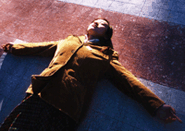 Summer Palace, 2006. Recalling the resigned regret of Lee Chang-dong’s Peppermint Candy (albeit less potent) and Stanley Kwan’s Everlasting Regret in its elliptical intersection of personal and (implicitly political) national history, Lou Ye’s sprawling epic, Summer Palace is an adept and thoughful, if largely perfunctory and tenuous survey of late twentieth century contemporary history from the parallel perspectives (and bafflingly, the sexual histories) of a group of close knit students – a young woman, Yu Hong (Lei Hao) who leaves her provincial hometown and devoted childhood love to embark on her university studies in Beijing, her friend and informal roommate Li Ti (Ling Hu), and a charismatic student leader named Zhou Wei (Xiaodong Guo) – as the euphoric seeds of youthful idealism, newfound liberation, and social protest were germinating towards the halcyon days of the spring and early summer of 1989 in what would inevitably prove an ideological collision with the government that would culminate with the Tiananmen Square massacre (a violent encounter that is presented in such a sanitized, almost surreal manner of students throwing rocks at a burning vehicle before running away, and a flank of soldiers shooting their rifles into the air). But beyond the historical superficiality inherent in Lou’s cursory treatment of contemporary history – a short-hand approach to historical re-enactment that borders on revisionism, undoubtedly fueled in part as a creative appeasement to circumvent government censorship – perhaps the key to the film’s estranged and oddly sterile portrait of the toll of profoundly traumatic history on a generation’s collective psyche may be seen through its evocation of a humorless (and consequently, less incisive) cultural analogy to Jean Eustache’s indelible film, The Mother and the Whore in its bracing, intimate portrait of the aftermath of the failed May 68 revolution, where faithlessness, despiritualization, and the disillusionment of unrealized idealism have been displaced by the oblivion of desensitizing escape, acts of self-erasure, and an inescapable sense of dislocated, perpetual exile.
Summer Palace, 2006. Recalling the resigned regret of Lee Chang-dong’s Peppermint Candy (albeit less potent) and Stanley Kwan’s Everlasting Regret in its elliptical intersection of personal and (implicitly political) national history, Lou Ye’s sprawling epic, Summer Palace is an adept and thoughful, if largely perfunctory and tenuous survey of late twentieth century contemporary history from the parallel perspectives (and bafflingly, the sexual histories) of a group of close knit students – a young woman, Yu Hong (Lei Hao) who leaves her provincial hometown and devoted childhood love to embark on her university studies in Beijing, her friend and informal roommate Li Ti (Ling Hu), and a charismatic student leader named Zhou Wei (Xiaodong Guo) – as the euphoric seeds of youthful idealism, newfound liberation, and social protest were germinating towards the halcyon days of the spring and early summer of 1989 in what would inevitably prove an ideological collision with the government that would culminate with the Tiananmen Square massacre (a violent encounter that is presented in such a sanitized, almost surreal manner of students throwing rocks at a burning vehicle before running away, and a flank of soldiers shooting their rifles into the air). But beyond the historical superficiality inherent in Lou’s cursory treatment of contemporary history – a short-hand approach to historical re-enactment that borders on revisionism, undoubtedly fueled in part as a creative appeasement to circumvent government censorship – perhaps the key to the film’s estranged and oddly sterile portrait of the toll of profoundly traumatic history on a generation’s collective psyche may be seen through its evocation of a humorless (and consequently, less incisive) cultural analogy to Jean Eustache’s indelible film, The Mother and the Whore in its bracing, intimate portrait of the aftermath of the failed May 68 revolution, where faithlessness, despiritualization, and the disillusionment of unrealized idealism have been displaced by the oblivion of desensitizing escape, acts of self-erasure, and an inescapable sense of dislocated, perpetual exile.
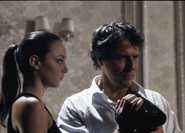 Exterminating Angels, 2006. It’s tough to find something redeeming about Jean-Claude Brisseau’s Exterminating Angels, a conflated, borderline pornographic, and execrable projection of the female psyche as seen through the murky gaze of a successful, middle-aged filmmaker, François (Frédéric van den Driessche) whose encounter with an actress recounting her sexual fantasy during an interview triggers his own personal and creative journey into capturing the intersection of desire and intimacy. Auditioning a series of actresses to act out their unsimulated moments of pleasure during increasing transgressive public situations and resurrecting them before the camera, François’ impenetrability over his unwillingness to cross the line between his role as artist/observer and his implication in the process of his actresses’ arousal as emotional manipulator/voyeur inevitably transforms the nature of the dynamic between the filmmaker and his actresses with profound and irreparable consequences for the both the participants and the film itself. Perhaps the key to the film’s opacity resides in Brisseau’s allusive reference to Luis Buñuel’s comedy of manners, The Exterminating Angel – the awkward encounters, polite conversations, and hollow gestures of feigned geniality that demarcate the intranscendable distance between control and vulnerability, manipulation and complicity, attraction and obsession, reality and performance. It is in this surreal illustration of moribund ritual that Brisseau’s incorporation of quasi-mythology in the appearance of Delphic guardians – one of whom may have been a former protégé who decided to leaving the profession (Raphaële Godin) – that the film’s overindulgent (un)eroticism seems perversely suited in illustrating the filmmaker’s ambivalence towards the role of women as nurturers, confidantes, and objects of desire – the transformation of fallen angels into unreconciled muses hovering the earth in search of true, and profoundly cataclysmic, inspiration.
Exterminating Angels, 2006. It’s tough to find something redeeming about Jean-Claude Brisseau’s Exterminating Angels, a conflated, borderline pornographic, and execrable projection of the female psyche as seen through the murky gaze of a successful, middle-aged filmmaker, François (Frédéric van den Driessche) whose encounter with an actress recounting her sexual fantasy during an interview triggers his own personal and creative journey into capturing the intersection of desire and intimacy. Auditioning a series of actresses to act out their unsimulated moments of pleasure during increasing transgressive public situations and resurrecting them before the camera, François’ impenetrability over his unwillingness to cross the line between his role as artist/observer and his implication in the process of his actresses’ arousal as emotional manipulator/voyeur inevitably transforms the nature of the dynamic between the filmmaker and his actresses with profound and irreparable consequences for the both the participants and the film itself. Perhaps the key to the film’s opacity resides in Brisseau’s allusive reference to Luis Buñuel’s comedy of manners, The Exterminating Angel – the awkward encounters, polite conversations, and hollow gestures of feigned geniality that demarcate the intranscendable distance between control and vulnerability, manipulation and complicity, attraction and obsession, reality and performance. It is in this surreal illustration of moribund ritual that Brisseau’s incorporation of quasi-mythology in the appearance of Delphic guardians – one of whom may have been a former protégé who decided to leaving the profession (Raphaële Godin) – that the film’s overindulgent (un)eroticism seems perversely suited in illustrating the filmmaker’s ambivalence towards the role of women as nurturers, confidantes, and objects of desire – the transformation of fallen angels into unreconciled muses hovering the earth in search of true, and profoundly cataclysmic, inspiration.
Acquarello, 2007 [reprinted]